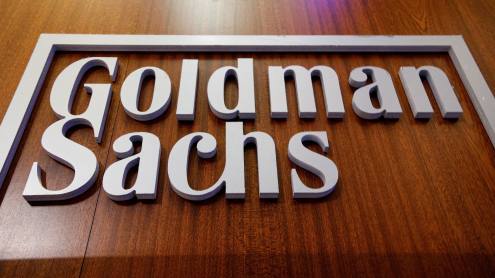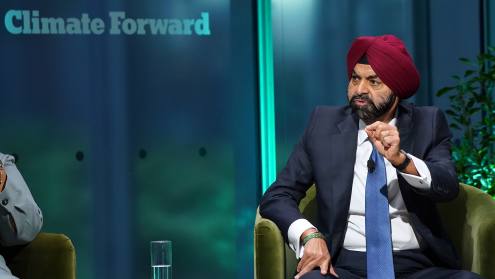
| Country | Population size | Number of SMEs | Measures | |
|
Canada | 37.5 million | 1.2 million | Key tax and spending measures total C$193bn ($138.5bn) including C$3.1bn to the health system. In addition, about C$105bn in direct aid to households, including payments to workers without sick leave and access to employment insurance and C$85bn in support to businesses through income and sales tax deferrals. Key measures adopted by the Bank of Canada include reducing the overnight policy rate by 150 basis points (bps) in March to 0.25% and an extension of the bond buyback programme. It has also launched the Bankers' Acceptance Purchase Facility and expanded the list of eligible collateral for term repo operations to the full range of eligible collateral for the Standing Liquidity Facility, except non-mortgage loan portfolios. The central bank is also supporting the Canada mortgage bond (CMB) market by purchasing CMBs in the secondary market. | |
|
USA | 329 million | 30 million | On April 24, the US Congress passed a new Covid-19 relief package totalling $484bn, the fourth aid bill to pass through the legislature in response to the pandemic. The legislation tops up a small business aid fund, while funding hospitals and testing. On March 27, the $2200bn Coronavirus Aid, Relief, and Economic Security (Cares) Act was signed by president Donald Trump, which includes $150bn for hospitals and unemployment support. The act includes $500bn in loans for large businesses and $350bn grants and loan forgiveness programmes for small and medium-sized enterprises (SMEs). It follows the Families First Coronavirus Response Act on March 18, which requires employers of less than 500 employees to provide paid sick leave to employees specifically for Covid-19 related reasons. In addition, Congress appropriated $8.3bn in emergency funding on March 6. Measures include $510bn to prevent corporate bankruptcy by providing loans, and guarantees, and backstopping Federal Reserve programme, as well as $359bn in forgivable US Small Business Administration loans and guarantees to help small businesses that retain workers. The Federal Reserve cut interest rates to near zero (0.0 to 0.25%) on April 9 and moved to offer an extra $2300bn in credit and support the market for high-yield corporate debt. In addition, $1500bn has been made available for short-term interbank lending and $700bn in US Treasury securities and mortgage-backed debt has been purchased. On March 23 the Fed announced a programme to buy an unlimited amount of bonds – enough to suppress borrowing costs indefinitely. | |
|
Brazil |
209 million |
6.3 million | In mid March, the Brazilian government announced plans to inject about 150bn reais ($30bn) into the economy. However, the package mainly consists of bringing forward previously announced measures. In total, the economy ministry’s support package totals 1200bn reais ($222bn). The fiscal stimulus includes a monthly stipend of 600 reais for low-income citizens to help weather the storm over a three-month period. Brazil’s central bank cut its benchmark interest rate by 50bps on May 6, leaving it at a record low of 3.25%. The central bank has also opened a facility to provide loans to financial institutions backed by private corporate bonds as collateral.
| |
|
Argentina | 44 million | 4.5 million | As of mid-June, the government has announced measures totalling about 4.9% of GDP, according to the IMF. Measures have sought to encourage bank lending through lower reserve requirements on bank lending to households and SMEs. On May 12, the Ministry of Finance established the criteria for the distribution of ARG60bn ($888m) worth of subsidised loans to the provinces. As part of its efforts to tackle the pandemic, the Argentine government is seeking to restructure $66bn worth of government debt in order to generate resources to combat the fallout from Covid-19.
| |
|
Mexico | 126.2 million | 4.2 million | As of mid-June, the Mexican government’s main response has been to offer loans to microbusiness owners in the form of 25,000 peso ($1,150) loans. In addition, the government is offering 4m credits of varying types, to both formally employed Mexicans who pay taxes, and those in the informal economy. Since the outbreak of the pandemic in March, the Mexican central bank has cut rates by 150 basis points.
| |
|
Peru | 31.9 million | 1.9 million | The Peruvian government has initiated a 90bn soles ($26bn) stimulus package (about 12% of GDP) The measures include 10bn soles in direct transfers to support vulnerable households. The government also approved a three-month extension for the income tax declaration for SMEs and is granting flexibility to enterprises and households in the repayment of tax liabilities. The central bank has cut the policy rate by 200 basis points, bringing it to 0.25%.
| |
|
Colombia | 49.6 million | 2.5 million | On April 3, the government announced it was setting aside COP15,000bn ($3.7bn) to tackle the crisis. The measures include additional cash transfers for the most vulnerable, VAT rebates for the poorest, tax deferrals for companies, and support for SMEs. Overall, the government claims it has invested 10% of GDP to combat the economic emergency. The measures include a COP1,000bn ($265m) line of credit to support the liquidity needs of microenterprises. The central bank, meanwhile, has cut interest rates three times. On March 27, the central bank cut the benchmark interest rate half a percentage point to 3.75%; On April 30, the central bank lowered rates to 3.25%; On May 29, the central bank cut rates to 2.75%.
|






